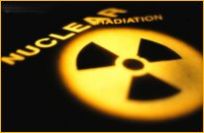
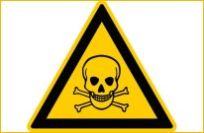
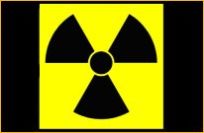
A release of a biological agent will have strong similarities to the outbreak of a naturally occurring disease and may take days to first become apparent and weeks to evolve. For this reason, biological attacks can be hard to detect and/or identify.
Examples of biological agents include:
The harmful effects of radiological and nuclear agents (i.e. radionuclides) results from the radiation they emit. This gives rise to two types of radiological hazard: from external exposure through absorption of radioactive material into the body.
There are three main types of radiation: alpha or beta particles and gamma rays, which have differing abilities to penetrate matter both between a person and the source and within the body.
Radionuclides can be grouped into three categories, according to their half-lives.
The categories are:
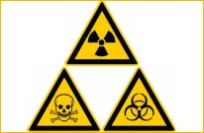
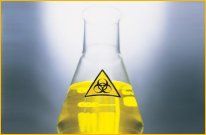
Radiological agents present a significant additional hazard resulting from the radiation they emit.
Chemical and biological hazards are created by agents in solid, liquid or vapour form that can be absorbed into the skin or through the eyes. Radiation can be absorbed through the skin or when in contact with the skin.
Chemical and biological hazards are created by vapours, aerosols or contaminated dust inhaled into the lungs. Radiation particles are inhaled into the lungs providing a direct dose of radiation which can also form concentrations in the bones and thyroid.
Chemical and biological hazards are created by direct injection into a vein or artery, or an agent moving into the blood stream from an injected area. Radiation can be injected through open wounds or on contaminated foreign bodies such as shrapnel.
Chemical agents typically present inhalation, ingestion and contact hazards. Some can be delivered as vapour or aerosols and cause poisoning by inhalation.
There are two broad categories of chemical agents:
© 2019, All Rights Reserved, Design & Developed By: AIS